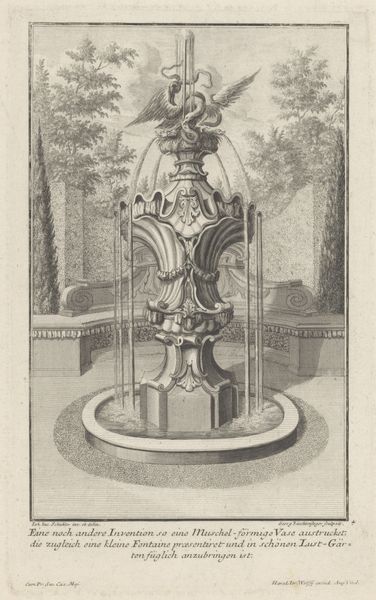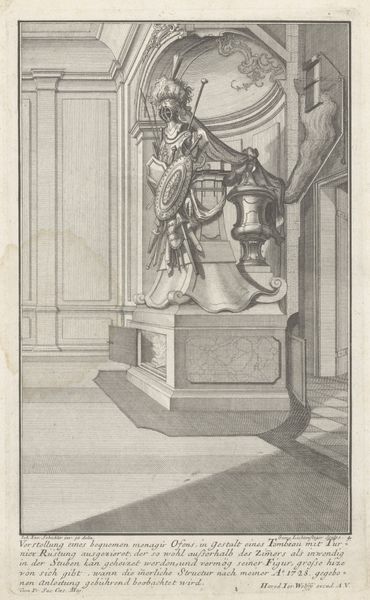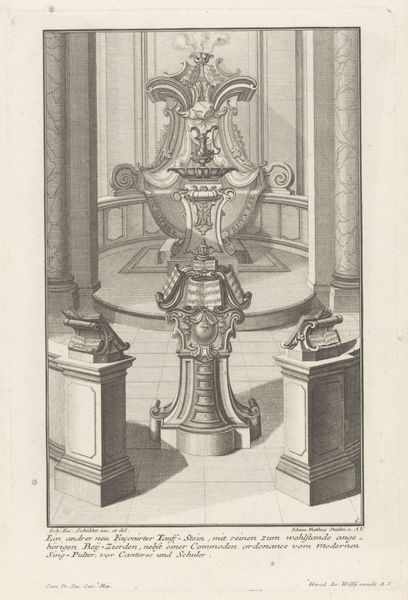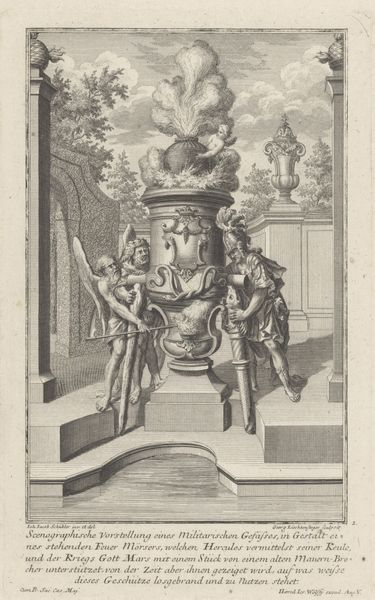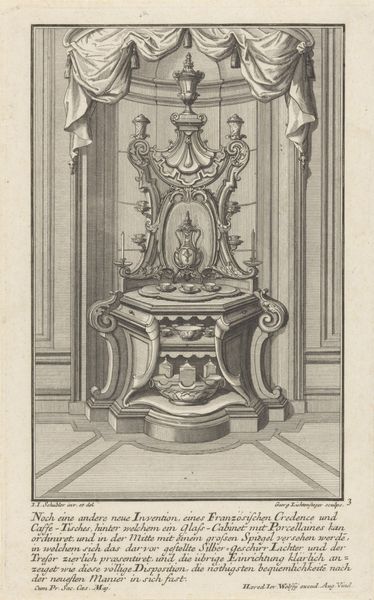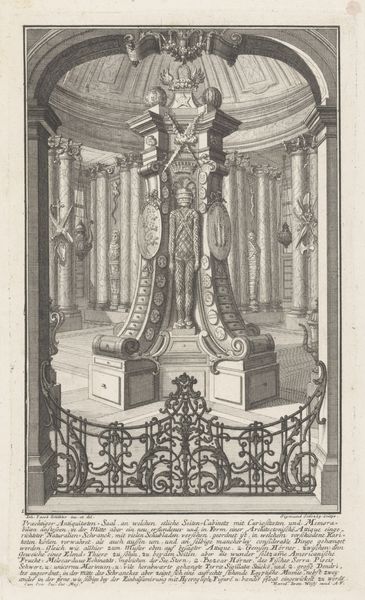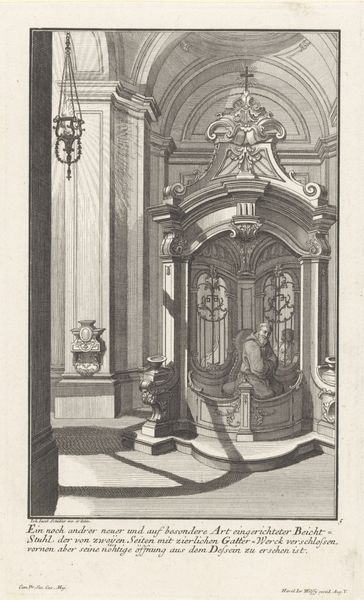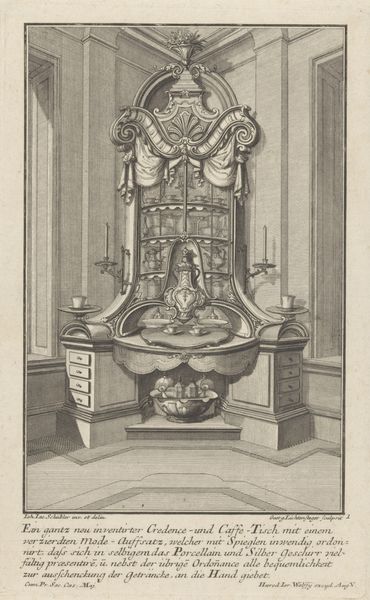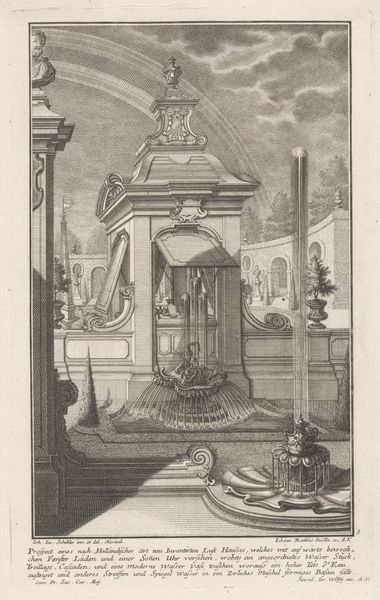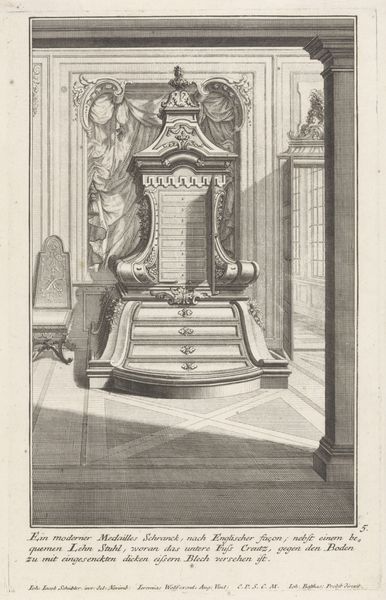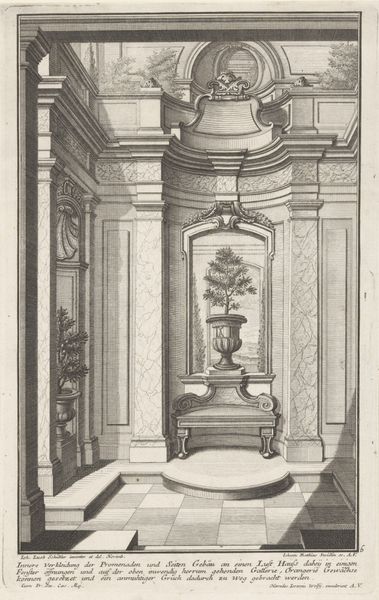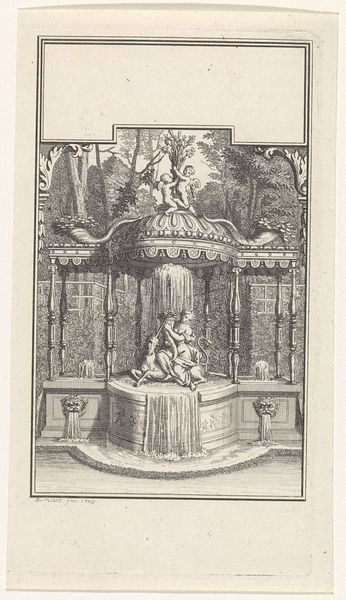
print, engraving, architecture
#
allegory
#
baroque
# print
#
old engraving style
#
traditional media
#
caricature
#
arch
#
engraving
#
architecture
Dimensions: height 281 mm, width 175 mm
Copyright: Rijks Museum: Open Domain
Curator: Georg Lichtensteger created this engraving, "Tuinvaas met zittende figuren," sometime after 1724. It's currently held at the Rijksmuseum. Editor: My first impression is melancholic; the figures appear deeply distressed, their postures reflecting sorrow. It gives off a baroque somber vibe. Curator: The composition absolutely amplifies that feeling. The large vase dominates, flanked by weeping figures. It’s very allegorical; the vase, positioned as a tomb, embodies mourning but also points to something beyond grief. Editor: Indeed, observe how the linear quality of the engraving technique reinforces the heavy atmosphere. The dense cross-hatching creates deep shadows, emphasizing the weight of the forms and contributing to the emotional intensity. I wonder, why engraving rather than etching? Curator: Lichtensteger opted for engraving to underscore permanence and memorialization—a deliberate choice given the subject matter. Note also how cherubic figures accent the vase itself, hinting at potential for spiritual elevation from mourning toward possible "Auferstehung" or resurrection. Editor: Semiotically, it’s fascinating. The arch in the background could symbolize passage. The seated figures act as counterpoints, grounded and physically bound, emphasizing human constraints. How interesting the faces are concealed! Curator: Yes, obscuring the faces adds to their symbolic universality; they aren't specific people, but instead represent collective human experience of loss and remembrance. Even their drapery contributes meaning – loosely cascading as though reflecting time’s passage, perhaps decay or gradual revealing of truths with the passage of time? Editor: What’s remarkable to me is that such carefully applied visual cues can still convey deeply emotional content hundreds of years later. I really appreciate the subtle dynamism held within a fairly rigid symmetrical form. Curator: Precisely. It’s a beautiful synthesis of sorrow and, maybe, cautious hope embedded within the structured aesthetics typical of the period.
Comments
No comments
Be the first to comment and join the conversation on the ultimate creative platform.
